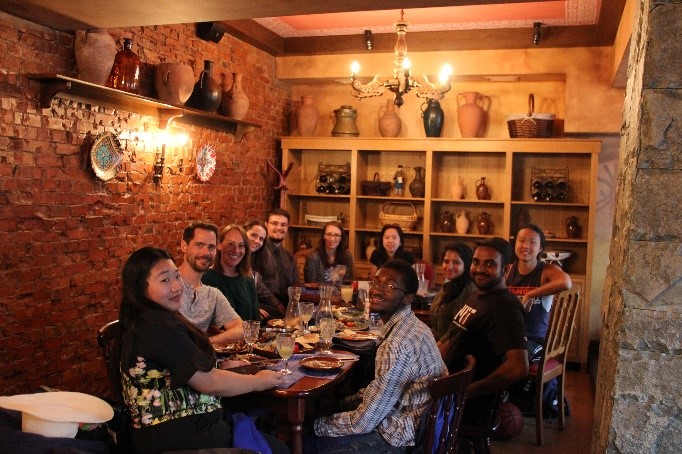- November 15, 2021
Vishnu Prasad interned at the Center for Development of Almaty in Kazakhstan, where he examined local housing strategies that have undergone profound transformation in post-Soviet Kazakhstan.
Transformation in the post-Soviet housing market
Vishnu Prasad, a graduate student in the Urban Studies and Planning department at MIT, interned at the Center for Development of Almaty in Kazakhstan, where he examined local housing strategies.
“Few countries have undergone the profound transformation in housing markets that Kazakhstan has seen post-1991,” he explains. “From a system that relied entirely on state provision of housing, Kazakhstan moved to a largely market-based housing model in the post-Soviet period.”
During his summer, Vishnu closely explored and studied the different housing typologies that exist in the city of Almaty. He learned that the housing typologies varied from informally built housing on the city’s peripheries to khrushchyovka, three- and five-story pre-fabricated apartment blocks built during the Nikita Khrushchev era, to more recently built private housing based on mortgage backed markets.
Exploring Kazakhstan's architectural history
Immersing himself in the culture of Kazakhstan, Vishnu explored the country’s rich architectural history from the Timurid monuments of Turkestan to the futuristic buildings of Astana.
“I also hiked the mountain trails around Almaty, sampled the diverse range of rich cuisines along the old Silk Road and discovering the enduring and perplexing popularity of Disco Dancer, a 1982 Bollywood movie, in Kazakhstan,” Vishnu shares.
Apart from field visits and a secondary survey of literature, Vishnu’s impressions of the housing market in Almaty were shaped by his own experience of living in one of the oldest Soviet built housing complexes in the city.
“I was particularly compelled by the design aspects of Soviet-built housing,” Vishnu shares, “like the facilitation of community through the creation of common spaces like playgrounds and parks; the easy accessibility of essential services like schools, hospitals and grocery stores; and the location of housing within pedestrian friendly zones. I learned a lot this summer,” he admits.
